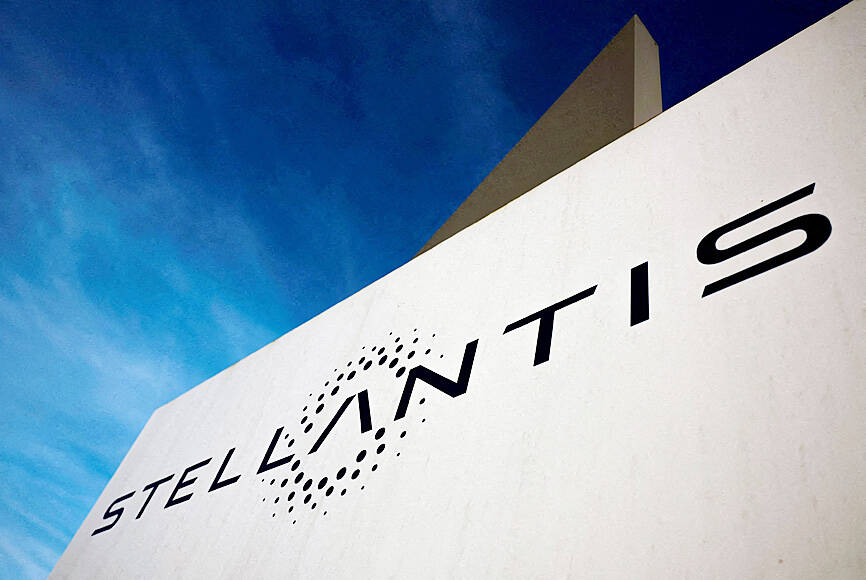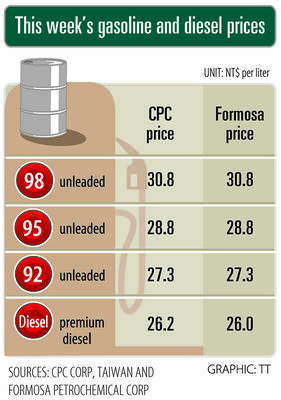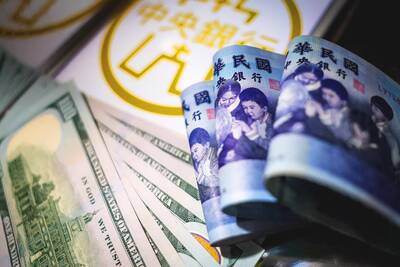Stellantis NV has reversed its decision to lay off about 1,100 employees at an Ohio Jeep plant less than three weeks after the abrupt resignation of chief executive officer Carlos Tavares, the Franco-Italian automaker said late on Saturday.
The company has decided not to put any employees on indefinite layoff from Jan. 5 due to a previously announced shift reduction and would instead extend a worker adjustment and retraining notification notice, a company spokesperson said in a statement.
Employees are expected to return to work as scheduled after the new year, the spokesperson said.

Photo: Reuters
Tavares’ exit was triggered by targets deemed unrealistic or destructive by some board members, sources said, after his sudden fall from the helm of the world’s fourth-biggest automaker, whose brands include Jeep, Ram, Fiat and Peugeot.
Last month, Stellantis announced plans to lay off employees at the Toledo South Assembly Plant, which makes the Jeep Gladiator, to improve efficiency and reduce inventory across its North American operations.
The Chrysler parent faces slipping sales in North America, which has historically brought in sizable profits thanks to sales of its popular Jeep and Ram vehicles.
Stellantis said last month that 400 workers at a Detroit automotive parts facility would indefinitely lose their jobs. In August, it said it was laying off up to 2,450 workers at a Michigan facility, as it ended production of the Ram 1500 Classic truck.
While the company has reduced its salaried workforce through voluntary buyouts, job cuts among its manufacturing employees represented by the United Auto Workers (UAW) union have gathered the most attention from politicians.
UAW president Shawn Fain has threatened a nationwide walkout at facilities, alleging that Stellantis has failed to keep promises it had made with the union.

SETBACK: Apple’s India iPhone push has been disrupted after Foxconn recalled hundreds of Chinese engineers, amid Beijing’s attempts to curb tech transfers Apple Inc assembly partner Hon Hai Precision Industry Co (鴻海精密), also known internationally as Foxconn Technology Group (富士康科技集團), has recalled about 300 Chinese engineers from a factory in India, the latest setback for the iPhone maker’s push to rapidly expand in the country. The extraction of Chinese workers from the factory of Yuzhan Technology (India) Private Ltd, a Hon Hai component unit, in southern Tamil Nadu state, is the second such move in a few months. The company has started flying in Taiwanese engineers to replace staff leaving, people familiar with the matter said, asking not to be named, as the

The prices of gasoline and diesel at domestic fuel stations are to rise NT$0.1 and NT$0.4 per liter this week respectively, after international crude oil prices rose last week, CPC Corp, Taiwan (台灣中油) and Formosa Petrochemical Corp (台塑石化) announced yesterday. Effective today, gasoline prices at CPC and Formosa stations are to rise to NT$27.3, NT$28.8 and NT$30.8 per liter for 92, 95 and 98-octane unleaded gasoline respectively, the companies said in separate statements. The price of premium diesel is to rise to NT$26.2 per liter at CPC stations and NT$26 at Formosa pumps, they said. The announcements came after international crude oil prices

DOLLAR SIGNS: The central bank rejected claims that the NT dollar had appreciated 10 percentage points more than the yen or the won against the greenback The New Taiwan dollar yesterday fell for a sixth day to its weakest level in three months, driven by equity-related outflows and reactions to an economics official’s exchange rate remarks. The NT dollar slid NT$0.197, or 0.65 percent, to close at NT$30.505 per US dollar, central bank data showed. The local currency has depreciated 1.97 percent so far this month, ranking as the weakest performer among Asian currencies. Dealers attributed the retreat to foreign investors wiring capital gains and dividends abroad after taking profit in local shares. They also pointed to reports that Washington might consider taking equity stakes in chipmakers, including Taiwan Semiconductor

A German company is putting used electric vehicle batteries to new use by stacking them into fridge-size units that homes and businesses can use to store their excess solar and wind energy. This week, the company Voltfang — which means “catching volts” — opened its first industrial site in Aachen, Germany, near the Belgian and Dutch borders. With about 100 staff, Voltfang says it is the biggest facility of its kind in Europe in the budding sector of refurbishing lithium-ion batteries. Its CEO David Oudsandji hopes it would help Europe’s biggest economy ween itself off fossil fuels and increasingly rely on climate-friendly renewables. While